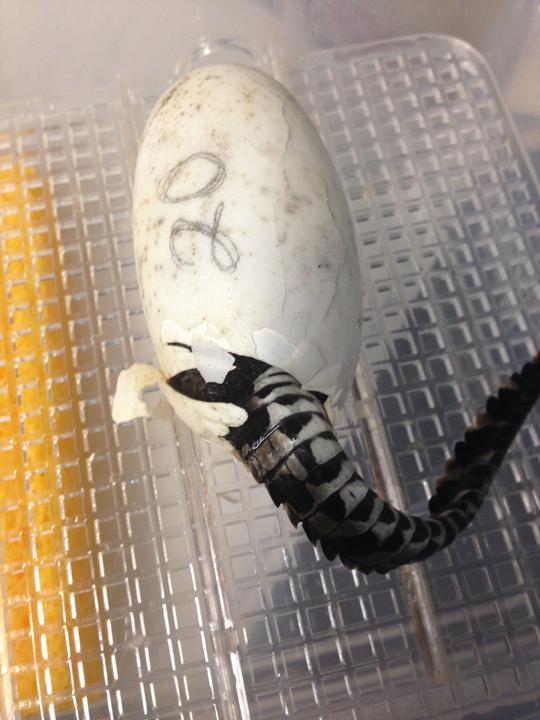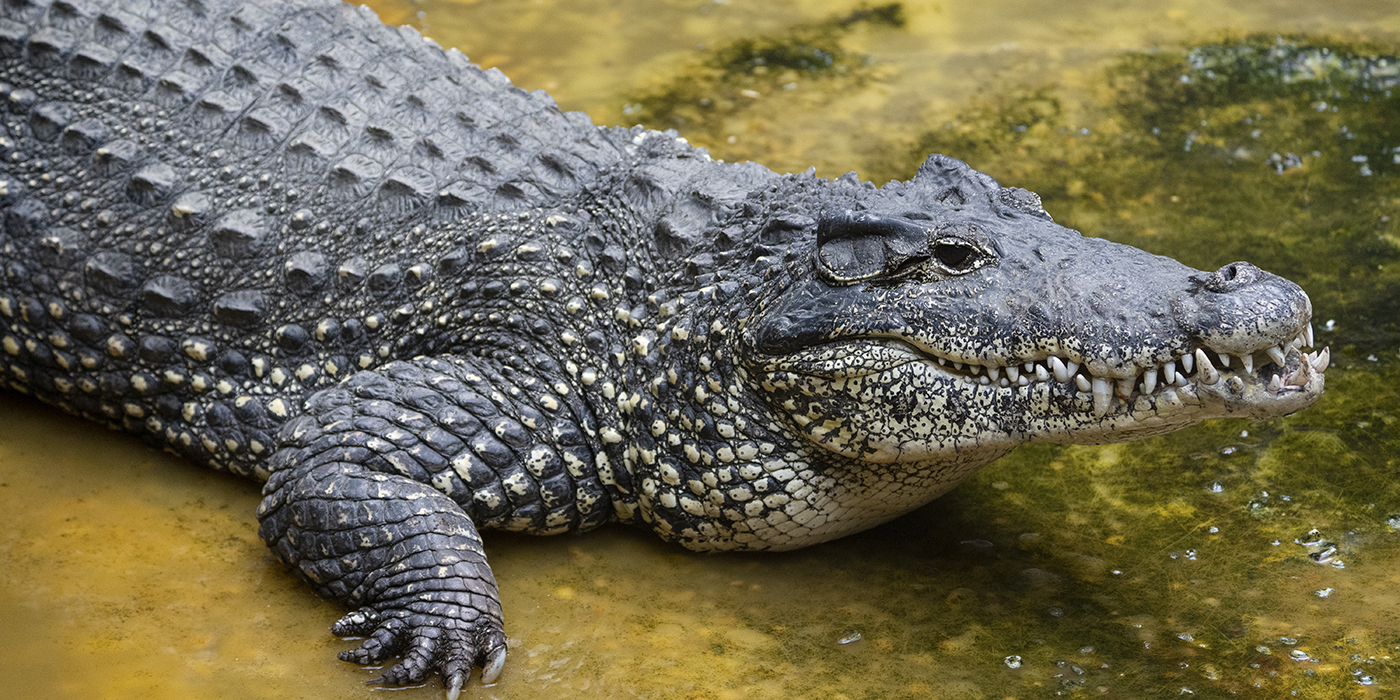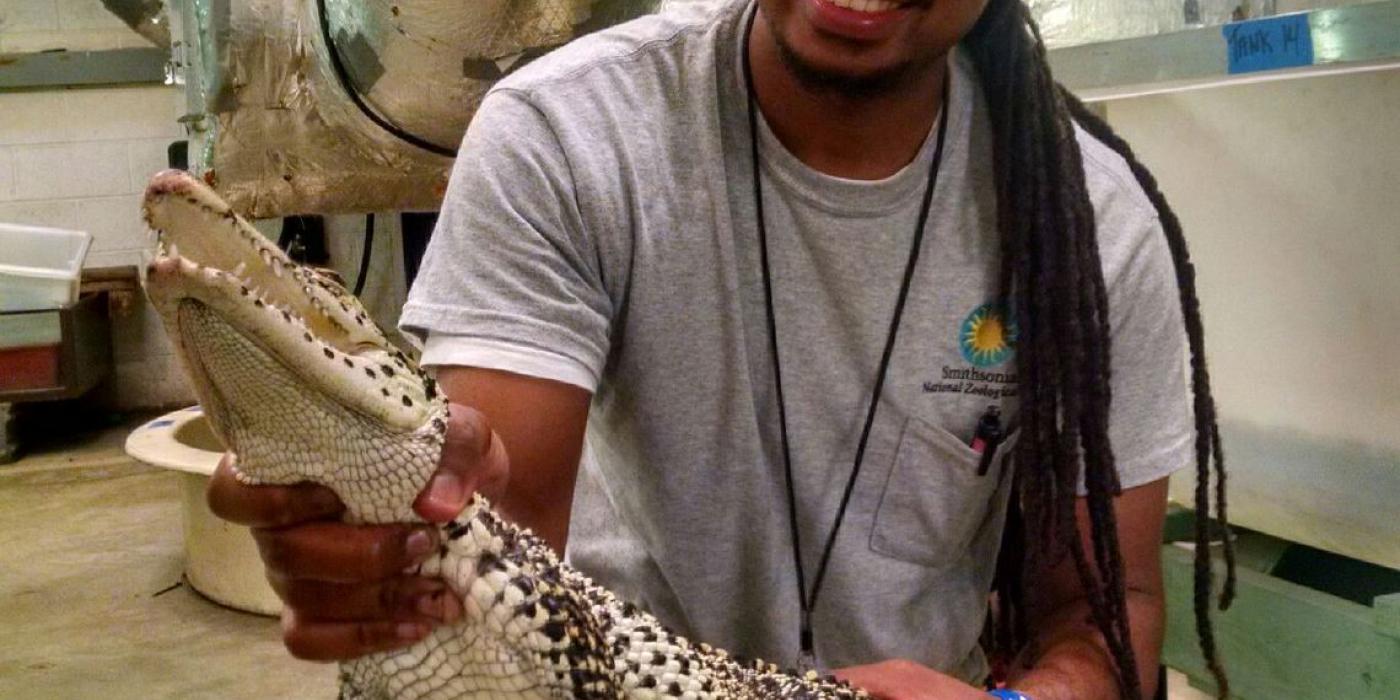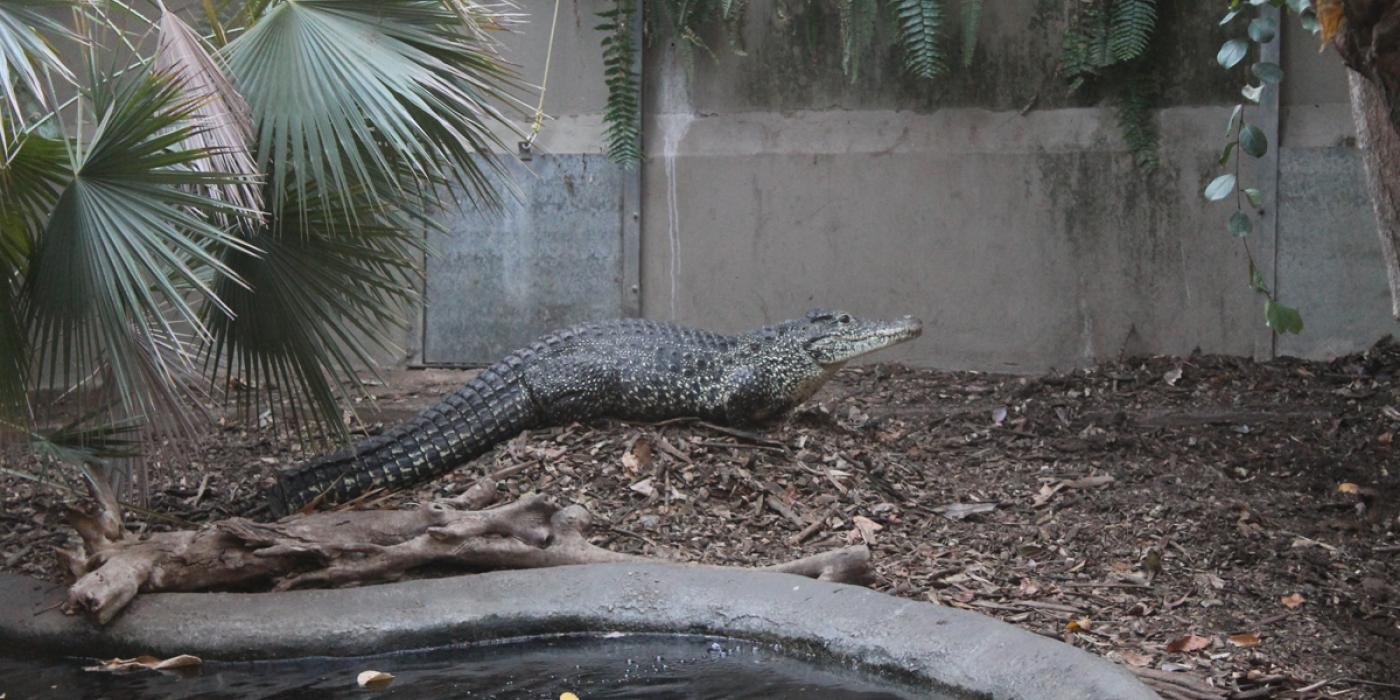The Croc and Gator Blog Aug 26, 2015
By Lauren Augustine
Very exciting news! All five Cuban crocodile eggs hatched!
Our first croc egg pipped on July 29. That means the hatchling began to break through the egg shell with a modified tooth called an egg tooth. Today the baby has fully emerged and looks great! Very Feisty! This egg was incubated in a different method then the remaining four. Suspend incubation is a method used by Herpetologists to help increase the amount of oxygen available to the developing embryo. Crocodilians lay hard shelled eggs. The egg shell serves two main purposes, it protects the inner portion of the egg and it allows for gas exchange between the inside and outside of the egg. When the baby crocodile has fully developed it will use its modified tooth too slice through the egg and begin to hatch. This is the third offspring of Dorothy, our highly valuable female Cuban crocodile. If the remaining eggs hatch Dorothy's genes will be sufficiently represented in the captive population.
The typical incubation time for these crocodiles is around 90 days. This baby hatched in 72, suggesting that this incubation method can in fact reduce incubation time! Another factor in this relatively short incubation was the high temperatures used to incubate. As I mentioned before, we were incubating for males which is hotter temperatures (89.6-90.5 Fahrenheit). Six days after our first hatchling emerged, two more eggs pipped. When keepers were checking on the eggs you could hear the babies chirping in the eggs. By 7 August all the babies had hatched. They weigh approximately 88 grams and are 28 centimeters long. All five babies are being housed off exhibit at the Reptile Discovery Center. Baby crocodiles are born with big bellies full of yolk. For the first week or so they don't need to be fed because they are still absorbing the nutrients from their yolk sacs. After about a week we begin offering the hatchlings insects and other prey items. After they are readily feeding, we will begin training the baby crocodiles. Getting the crocodiles trained early will help with husbandry as they grow. Hopefully, when they are older all of the training will have made working with these big and potentially dangerous animals a little safer (though still not safe enough to be in an enclosure with them).
These babies are genetically valuable additions to the Cuban crocodile species survival plan (SSP). Once they are large enough to breed the SSP will pair up these crocs for breeding. The ultimate goal is to sustain a genetically viable population in human care. We are extremely proud to participate in these types of programs and couldn't be more thrilled to contribute these adorable new hatchlings!
Related Species:




